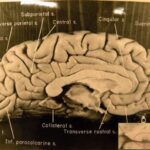“How Dogs Learn” offers a textbook-style approach to understanding canine behavior. While the content might be familiar to experienced dog owners, it provides a valuable refresher on core concepts like reinforcement and behavior analysis. This review explores the book’s strengths and weaknesses, focusing on its academic approach and its exploration of complex training issues.
Decoding Canine Behavior: A Textbook Approach
The book meticulously defines and explains key terms in dog training, much like a college textbook. This systematic approach, while thorough, can feel somewhat dry and academic. However, it clearly outlines fundamental principles, reinforcing the importance of understanding reinforcers and analyzing both dog and owner behavior. “How Dogs Learn” compels readers to critically assess their training methods and expectations, fostering a deeper understanding of the dog-human communication dynamic.
Beyond the Basics: Navigating Complex Training Issues
While not a how-to guide, the book delves into nuanced topics like punishment and negative reinforcement, differentiating between the two with clarity. It raises thought-provoking questions about ethical dilemmas in training, such as using punishment in life-or-death scenarios. However, the book sometimes poses questions without providing concrete solutions, leaving the reader pondering practical application. For instance, it questions the use of punishment for a dog herding deer to prevent it from being shot, despite previously highlighting the ineffectiveness of punishment compared to positive reinforcement. This leaves a gap between theoretical knowledge and practical guidance.
Finding Balance: The Middle Ground in Training Philosophies
“How Dogs Learn” strives for a balanced perspective on training methodologies. It criticizes both extremes: trainers relying solely on punishment and those exclusively using positive reinforcement. This nuanced approach acknowledges the complexities of dog training and avoids advocating for a single dogmatic approach. However, the critique of positive-only trainers feels somewhat implicit compared to the more direct criticism of punishment-based methods.
Evolutionary Missteps: A Flawed Perspective on Dog Domestication
One significant flaw is the book’s outdated view on dog domestication. It perpetuates the debunked myth of cavemen domesticating wolves through behavioral techniques. This outdated theory, lacking scientific basis, contradicts current understanding of canine evolution. Readers seeking accurate information on this topic should consult works by experts like Raymond and Lorna Coppinger for a more scientifically grounded perspective.
Conclusion: A Valuable Resource with Some Shortcomings
“How Dogs Learn” serves as a comprehensive overview of canine behavior principles. Despite its textbook-like tone and one significant factual error regarding domestication, the book offers valuable insights into understanding dog learning and training. Its balanced approach to training philosophies and exploration of complex issues makes it a worthwhile read for those seeking a deeper understanding of their canine companions. However, readers should supplement this book with more current resources on canine evolution and practical training guides for a well-rounded education.
